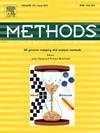永生化蝾螈成纤维细胞的优化工具箱。
IF 4.3
3区 生物学
Q1 BIOCHEMICAL RESEARCH METHODS
引用次数: 0
摘要
蝾螈模型在再生研究中具有广泛的实用性,但由于缺乏有效的基于细胞培养的工具,该模型受到限制。Axolotl Limb-1 (AL-1)成纤维细胞系是唯一可用的永生化Axolotl细胞系,于20 年前首次发表,但许多已建立的分子生物学技术,如脂质体转染,CRISPR-Cas9诱变和抗生素选择,在AL-1细胞中效果不佳或尚未经过测试。在培养中操纵AL-1细胞并研究其移植到蝾螈体内后的行为的创新技术将补充体内研究,减少使用的动物数量,并使再生生物学问题的研究更快,更精简。在这里,我们在蝾螈AL-1细胞中建立转染、诱变、抗生素选择和体内移植技术。这些技术将使AL-1细胞的高效培养成为可能,并指导未来开发其他蝾螈细胞系的培养和操作工具。本文章由计算机程序翻译,如有差异,请以英文原文为准。

Optimized toolkit for the manipulation of immortalized axolotl fibroblasts
The axolotl salamander model has broad utility for regeneration studies, but this model is limited by a lack of efficient cell-culture-based tools. The Axolotl Limb-1 (AL-1) fibroblast line, the only available immortalized axolotl cell line, was first published over 20 years ago, but many established molecular biology techniques, such as lipofectamine transfection, CRISPR-Cas9 mutagenesis, and antibiotic selection, work poorly or remain untested in AL-1 cells. Innovating technologies to manipulate AL-1 cells in culture and study their behavior following transplantation into the axolotl will complement in-vivo studies, decrease the number of animals used, and enable the faster, more streamlined investigation of regenerative biology questions. Here, we establish transfection, mutagenesis, antibiotic selection, and in-vivo transplantation techniques in axolotl AL-1 cells. These techniques will enable efficient culture with AL-1 cells and guide future tool development for the culture and manipulation of other salamander cell lines.
求助全文
通过发布文献求助,成功后即可免费获取论文全文。
去求助
来源期刊

Methods
生物-生化研究方法
CiteScore
9.80
自引率
2.10%
发文量
222
审稿时长
11.3 weeks
期刊介绍:
Methods focuses on rapidly developing techniques in the experimental biological and medical sciences.
Each topical issue, organized by a guest editor who is an expert in the area covered, consists solely of invited quality articles by specialist authors, many of them reviews. Issues are devoted to specific technical approaches with emphasis on clear detailed descriptions of protocols that allow them to be reproduced easily. The background information provided enables researchers to understand the principles underlying the methods; other helpful sections include comparisons of alternative methods giving the advantages and disadvantages of particular methods, guidance on avoiding potential pitfalls, and suggestions for troubleshooting.
 求助内容:
求助内容: 应助结果提醒方式:
应助结果提醒方式:


